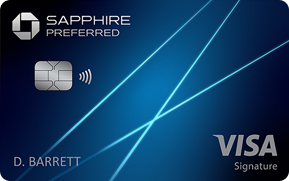
Welcome back to the Choose Credit blog! Thanks for your interest…
We’re grateful for your tremendous response to our initial blog post: Credit or Debit? Your comments; LIKES and SHARES on Facebook, Twitter, and Instagram; and additional feedback have been greatly appreciated.
As we discussed in our original blog post, the prospect of financial rewards is one of the key reasons that, more often than not, credit beats debit. These rewards vary among the countless number of credit cards out in the marketplace, but virtually every credit card measures financial rewards based on a points system.
For so many of us, these different point systems and bonus categories can be confusing. That’s why here at Choose Credit blog, we’re focusing much of our time and resources to help you make sense of these financial rewards programs and show how YOU can Earn Points and Stretch Your Dollar on your everyday spending.
Today, we’re dipping our toes in the world of travel rewards, a highly valuable and yet often misunderstood area of credit card rewards.
CASH BACK

I bet that most of you have seen plenty of commercials that mention something about cards earning cash back. Here’s an example that I’ve seen frequently: https://www.youtube.com/watch?v=Mxi4bO6vjDs
As that commercial emphasizes, the Capital One Savor offers a solid 4% cash back on dining and entertainment, and members can also earn 2% cash back at most grocery stores and 1% on everything else.
So what does this mean? It means that for every U.S. dollar a Capital One Savor cardholder spends at restaurants, sporting events, concerts, theme parks, etc., the cardholder will earn 4 cents back as a reward (2 cents per dollar at most grocery stores, and 1 cent per dollar for other types of purchases). “Free money” sounds good, right?
So is cash back the king of credit card rewards or does travel rewards have a stronger claim to the throne? Short answer: It depends (a lawyer’s favorite answer)…
Long(er) answer: Bear with me, friends.
As I said before, every card has its own points system and bonus categories. The Capital One Savor offers cash back as its primary reward, as does the Chase Freedom, Chase Freedom Unlimited, and Blue Cash Preferred from American Express. Understanding the redemption value is pretty straightforward:
Capital One Savor – 4% cash back on dining and entertainment, 2% cash back at most grocery stores, 1% cash back on everything else;
Chase Freedom – 5% cash back up to $1,500 in combined purchases at merchants in the card’s quarterly bonus category, 1% cash back on everything else;
Chase Freedom Unlimited – 1.5% cash back on all spending;
Blue Cash Preferred from American Express – 6% cash back at U.S. supermarkets on up to $6,000 per year in purchases, 3% cash back at U.S. gas stations; 1% cash back on everything else.
What credit card issuers aren’t actively promoting in their commercials is that your rewards are actually earned in points. Those points are most often redeemed as cash back, where 1 point often equals 1 cent or even less. But in most cases, you aren’t limited to redeeming your points as cash back only; you can also redeem them for gift cards (which generally devalues your points) or TRAVEL. Now let’s talk travel.
TRAVEL

Now we’re back to the main focus of this post—Travel Rewards: Where Do I Start?
I find it best to discuss travel rewards within the context of what I would consider the best and most valuable beginner travel rewards card on the market: the Chase Sapphire Preferred.

The Sapphire Preferred has one of the most incredible sign-up bonuses in the business: 60,000 Ultimate Rewards points. To earn those points, you must spend $4,000 in the first three months from the opening of your account. If you redeemed those points as cash back, you’d have $600! That’s nearly a 15% return ($600 bonus/($4,000 spending + $95 annual fee)) = 0.146)!
But what if I told you that you could essentially DOUBLE your value by redeeming those 60,000 points for travel? Which means yes, those 60,000 points could be worth $1,200 (a 29% return) if you play your cards right!
How is this possible and why would issuers like Chase give us this option?
This is possible thanks to the tremendous bargaining power that Chase—the largest bank in the U.S. and the sixth largest in the world based on their $2.5 TRILLION of assets—has with travel companies. The deal is simple: Chase offers its credit card customers an opportunity to improve their points redemption value by including ABC Airplane Company on their redemption list. Chase gets a generous discount from ABC Airplane Company in exchange for referring credit card customers as new customers of ABC Airplane Company. Chase saves money; ABC Airplane Company gets more business.
Another reason is Chase wants to offer benefits that bring value to its customers. I haven’t even gotten into all the details, but it should already be clear that travel rewards are certainly valuable to the majority of Americans. If a credit card’s benefits don’t bring some tangible value to the customer, then that card probably won’t be a successful venture for Chase. But by offering travel rewards as an option, Chase can make profits off its credit cards.
The sign-up bonus for Chase Sapphire Preferred is tough to beat. Based on the sign-up bonus alone, I would recommend you apply for this card.
If you’re new to the Choose Credit game and are wondering how in the world you could spend $4,000 in the first three months, I have three words for you: CHRISTMAS. IS. COMING. Regardless of which holidays you and yours celebrate, I would venture to guess that you’ll be spending more cash than usual these next few months. My other bit of advice is: use your new credit card for as many of your purchases as possible!! Bills, groceries, rent/mortgage payments, dining out, the whole nine yards… can really add up. Get more value out of your dollar and Choose Credit!
What else does the Chase Sapphire Preferred offer?
While the sign-up bonus for the Chase Sapphire Preferred and other travel rewards cards can certainly be appetizing, you can only earn the bonus once. So what else could this card and others offer for the rest of your card membership?
Travel and Dining Bonuses
The Chase Sapphire Preferred offers 2x Ultimate Rewards points per dollar spent for dining and travel. These categories are extremely broad; here are a few examples:
- Restaurants
- Airplane tickets
- Coffee shops
- Rental car
- Uber/Lyft
- Tolls
- Street parking
Circling back to how valuable those points can be if you redeemed them for travel (2x points per dollar x travel points valuation of 2 cents per point = .04), we’re talking a 4% return on your everyday dollar!
Travel Benefits
- Car rental insurance – This benefit covers the entire loss, damage, or theft of your car rental without reporting it to your insurance company. A huge win!
- No foreign transaction fees!
- Trip delay insurance up to $500 per ticket.
- Trip cancellation/trip interruption insurance up to $10,000 per trip for pre-paid, nonrefundable travel expenses if your trip is interrupted by sickness, severe weather or other covered situations.
- Baggage delay insurance of $100 per day for up to 5 days.
So What Is/Are the Catch(es)?
- Annual Fee – The Chase Sapphire Preferred and similar travel rewards cards require an annual fee of $95 (keep in mind the fantastic value you receive from the sign-up bonus, earning categories, and other benefits listed above).
- You MUST pay off your statement balance IN FULL every month. The interest you will pay could outweigh the exceptional benefits of this card.
- You’ll likely need a Good credit score (high 600s – 700s) to get approved, but fear not! I bet your score is better than you think. And if you’re approval odds aren’t good we will help you raise that score (be on the lookout for a coming blog post)!
- Also be aware of Chase’s 5/24 rule – Chase will likely deny your application if you’ve opened five or more accounts (with any issuer) in the past 24 months.
Bottom Line

The Chase Sapphire Preferred is about as good as it can get for your first travel rewards card. If you don’t already have this card in your wallet (whether you are a credit card rewards novice or a long-time expert rewards seeker), I would STRONGLY RECOMMEND you give this card a try!
You will not only enjoy one of the best sign-up bonuses in the credit card world, but also become a cardholder of one of the most valuable rewards cards out there for a minimal cost of $95 each year!
Your future is bright in the world of credit card rewards! Keep up with Choose Credit to learn more. Please send us your comments and continue to LIKE and SHARE our website home and social media (Facebook, Twitter, and Instagram) pages!
Until next time, my friends! Indeed, the “Future Looks Good…”
Great column. Look forward to your next post
LikeLike